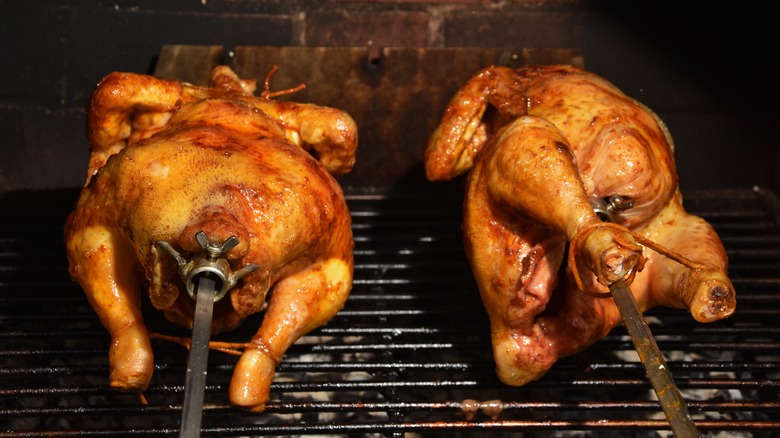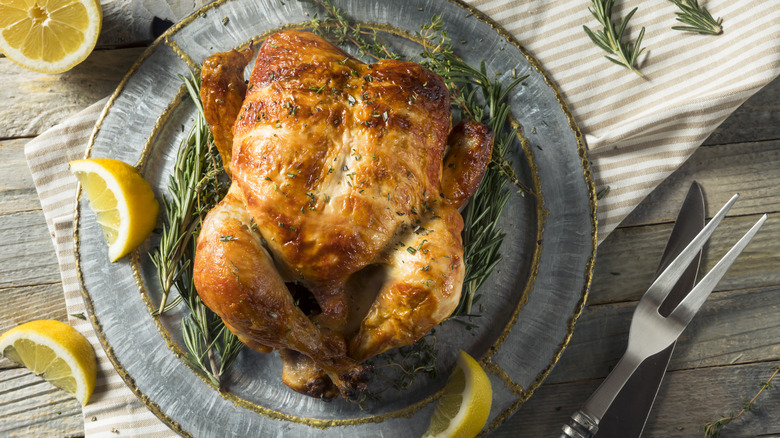Skip The Frozen Bird When Cooking A Rotisserie Chicken
With its crisp, bronzed skin and tender savory meat, it's no wonder that rotisserie chicken is so popular. While you can buy a rotisserie chicken from Costco for $4.99, it's well worth taking the time and effort to cook it yourself from-scratch. But there's one key tip that will make a world of difference to the finished result: You need to start with a fresh bird, not a frozen one.
Technically, you can generally cook frozen chicken without thawing it; it just takes around one-and-a-half times longer to cook than when you're starting with fresh or fully thawed poultry. But for the best outcome, you need to cook your rotisserie chicken on the grill. This is not a good method for whole frozen birds as they won't cook evenly due to their large size and shape — unlike thin, uniform burgers which you absolutely can grill from frozen.
Grilling involves cooking at high temperatures to give the food that gorgeously smoky taste and delicious texture. For a rotisserie chicken, the temperature of the grill should be between 350 to 400 degrees Fahrenheit. If your poultry is frozen rather than fresh, there's a danger that the exterior of the bird could begin to burn in the high heat while the center remains cold or even still raw, without having reached the required internal temperature of 165 degrees Fahrenheit.
Use fresh chicken for the best rotisserie results
Along with making sure the meat is thoroughly cooked, there are several other steps when preparing and cooking rotisserie chicken that favor using a fresh bird rather than a frozen one. Firstly, it's best to brine poultry for rotisserie cooking, and this works best on a fresh or at least semi-thawed bird. A dry brine (involving coating the interior and exterior of the bird in salt before allowing it to air-dry) will keep the meat juicy and tasty, while also removing moisture from the skin. This is key for achieving gorgeously golden, crisp skin on the grill. An expert tip to level up homemade rotisserie chicken is to add seasoning to the salt to further boost the flavor.
Another top tip to help the bird stay in position during rotisserie cooking is to truss it, which involves tying its legs together and tying the wings to the body with kitchen string or twine. The trussing process also helps the poultry to cook in a more even manner, since it's a more uniform shape. This also requires a fresh bird, as it's not possible to truss a chicken that's frozen solid.
If you're set on using frozen chicken, it should be thawed rather than cooked from frozen. This will keep you safe from exposure to raw meat and ensure that the bird cooks evenly. But to achieve a rotisserie bird that's truly superior to any store-bought offering, starting with a fresh chicken is the way to go.


